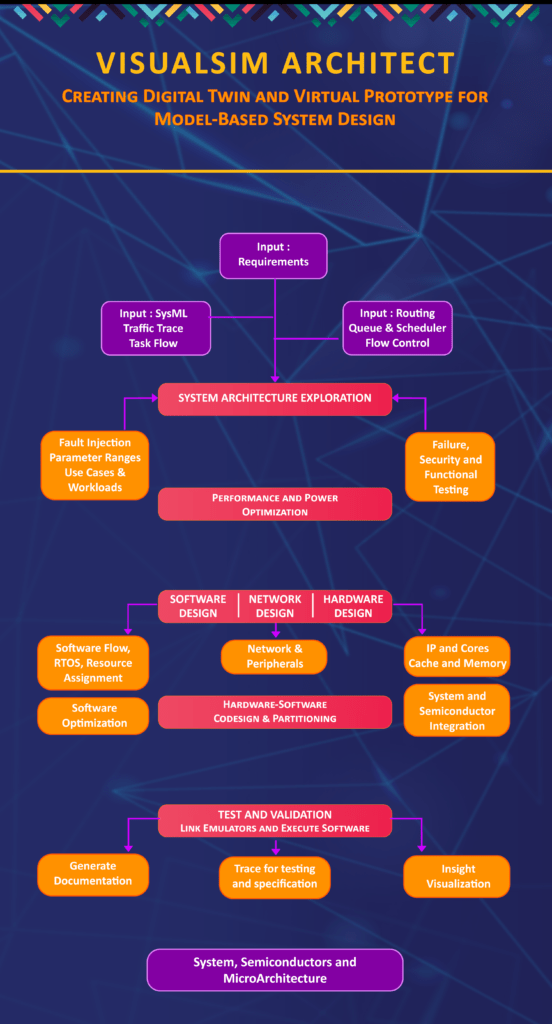Was talking to a Senior Member of the US Military and the conversation swerved from architecture exploration of semiconductors to a seamless flow from requirements to communicating with system integrator. All the studies that ensure a full understanding of the project is the only way to ensure the project is successful and eliminates all surprises prior to integration.
Systems engineers should have a dynamic simulation environment where they can simulate the full system with all the use cases, compare the results against the requirements and identify the feasible solutions and the cause of any bottlenecks in others.
Full system is an ambiguous term. So, he explained that it must be from mission planning to product design and verification. The important detail is that every aspect required by the integration and development team must be included in this system model.
Dynamic simulation is equally ambiguous and it is means the performance (latency and throughput), power consumption and functionality. The important piece here is that the math comes much later.
The reason is that without how all the use-cases, without knowing the limitation and without knowing the tight hardware requirements, how can you immediately jump into implementation. Implementation would be defined as the mathematics that define the coefficients of the FFT, software code, PCB layout and the semiconductor RTL code.
Here is a slide from the Mirabilis Design arsenal that shows how this flow will work.
#mission #missioncritical #softwareprojects #asicdesign #asicverification #pcblayout #AIHardware #deepneuralnetworks #architecturedesign #performanceanalysis #powermanagement #spaceforce #usaf #semiconductor #military #architecture #team #design #development #software #hardware #environment #power #planning #engineers #productdesign #mathematics
 VisualSim Methodology for design of complex defense systems
VisualSim Methodology for design of complex defense systems